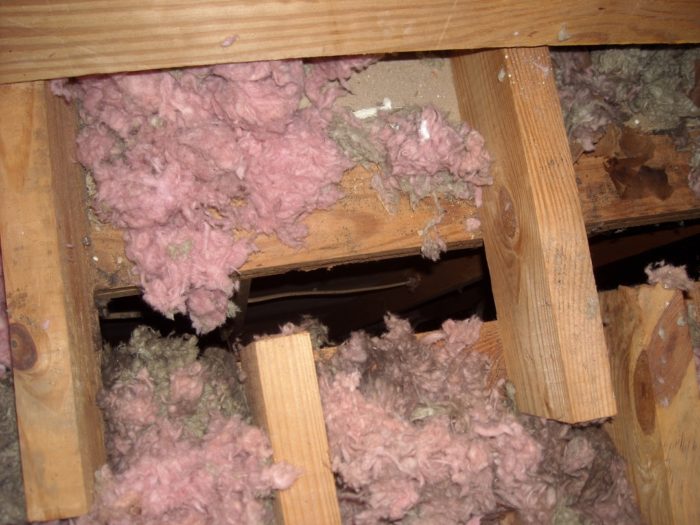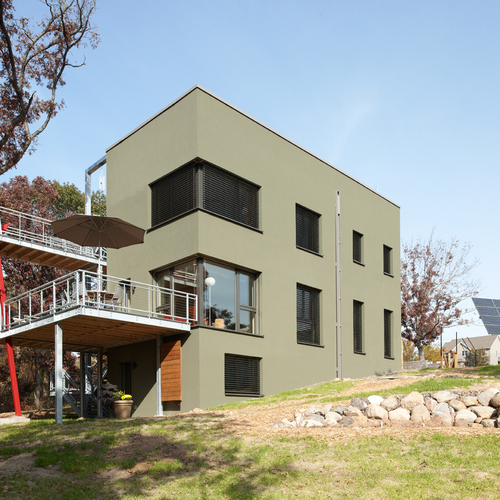
Image Credit: Allison Bailes
by Martin Holladay
GBA is launching a new feature: periodic reviews of interesting blogs. To get the ball rolling, I’m recommending the Energy Vanguard blog.
The author of the Energy Vanguard blog, Allison Bailes of Decatur, Georgia, is a RESNET-accredited energy consultant and trainer. He performs heat loss calculations, provides HERS rating services, and provides rater training and Energy Star training, among other services.
Allison has a PhD in physics, a fact that is reflected in his approach to building science. He’s worked at a variety of jobs; at one point he worked as a contractor offering air sealing, duct sealing, insulation installation, and crawl space encapsulation services. For a few years, Bailes worked at the Southface Energy Institute as the regional manager for the EarthCraft House program.
Air sealing and pressure differences
Readers who live in Southern states will particularly appreciate Bailes’ Georgia perspective. A few samples of Bailes’ writing give a flavor of the range of his blog topics.
On thermal bypasses: “In such houses, the problem results from the top of the walls being open to the attic. You can go into the attic and look down into the interior walls and see the drywall. That means that cold attic air gets down into those cavities.”
On sealing air leaks: “So, before you go around caulking your windows and weatherstripping your doors, get up in your attic and seal the real leaks!”
On aligning air barriers with insulation: “We’ve got 2×8 floor joists, with a depth of 7.25 in. The R-7 fiberglass batts are only about 2 in. thick. (R-7? Really?! Why bother!) You can see in the photo below that these batts don’t come anywhere close to touching the subfloor, and that’s how they’re installed in just about every cavity in this floor.”
On the quality of spray foam jobs: “I’ve seen a number of houses with problems even though they’re insulated with spray foam. In order of prevalence, here are the problems I’ve seen, with explanations following the list:
- Spray foam isn’t thick enough.
- Spray foam installers missed some of the air leakage sites.
- Spray foam installers didn’t understand the building envelope and sprayed either too little or too much.
- Spray foam contracts and pulls away from framing.”
On the value of measuring air changes per hour: “Infiltration occurs at the surface, not in the volume. … We need to stop talking about infiltration rates in terms of air changes per hour because there are too many problems with it. … Normalizing to volume also builds in a bias toward larger homes. Since surface area is proportional to the square of the radius and volume is proportional to the cube of the radius, the volume increases faster than the surface area as a house grows in size. So, large houses benefit when dividing by volume instead of surface area. …. It’s time to quit using ACH to talk about infiltration.”
On the difficulties of measuring “natural” air changes per hour: “Pressure differences created by mechanical systems can eclipse those created by wind and the stack effect. The disconnected supply duct, the panned return, the 1,200-cfm commercial range hood with no makeup air — all these things can dwarf the effects we’re trying to capture in ACHnat.”
On carpet stains: “Do you have light colored carpet in your home that has dark edges where it meets the baseboard? If so, don’t beat yourself up so much for not being a good enough house cleaner. The problem is probably in your building envelope, not your vacuum cleaner. The reason the dirt is accumulating there in the first place, you see, is that a lot of air is moving through the carpet at that point. For air to move from one place to another, two conditions must be met:
- A pressure difference drives air from the high pressure side to the low pressure side.
- A pathway allows the air to move.”
On the fact that particulates piggybacking on air leaks often stain fiberglass batts: “It was really nice of the insulation manufacturers to make their products in colors that show dirt really well — white, yellow, and pink. If they made grey insulation, finding air leaks would be more difficult.”
On dehumidifiers in vented crawl spaces: “No dehumidifier can dehumidify all the air in Atlanta, which is what they’re asking this little one to do because the crawl space is vented to the outside.”
Photos illustrating leaks and problems
Like many home performance contractors, Bailes always keeps a camera handy. He has an excellent collection of photos illustrating a variety of home-performance problems, and he effectively uses those photos to clarify points made in his blogs.
A tiny quibble: Bailes’ blog (like portions of the GBA Web site, it must be admitted) is a little confusing to navigate. That said, it’s well worth clicking a few links until you figure out how to find all of Bailes’ blogs.
GBA highly recommends Bailes’ blog. So go visit the Energy Vanguard.
To read a sample of Bailes’ writing, check out his guest blog here at GBA: Is There a Downside to Lumpy Attic Insulation?.
Weekly Newsletter
Get building science and energy efficiency advice, plus special offers, in your inbox.














4 Comments
I couldn't agree more!!
Great way to start off the new feature of GBA! I always like the articles and discussions here at GBA and find the same quality of writing at Energy Vanguard as well. Allison has a great way with words and is also a great resource for building science related advice and opinions.
much appreciation
I'm bookmarking it now, Martin. Much appreciated.
And the man is less than 50 miles from here! Woot! Gradually I'm finding people, with the help of other people like you, who won't keep saying "You won't need all that insulation, Yankee. Yer in the south." He and Carl and Michael are regional resources, lol.
Thanks again,
Joe Wilson
Thanks!
I appreciate the nice review, Martin! And, yes, I realize the website has gotten a bit maze-like, but it was really easy to find everything last March when I had only 4 pages! We're going to be working on it this year, though.
Thanks for your comments, Jamie & Joe!
I particularly like his piece on "Why Tyvek isn't an Air Barrier
http://www.energyvanguard.com/blog-building-science-HERS-BPI/bid/32017/5-Reasons-House-Wrap-Is-Not-an-Air-Barrier
His thoughts on Building science summer camp are pretty hilarious as well.
http://www.energyvanguard.com/blog-building-science-HERS-BPI/bid/28100/I-Don-t-Need-No-Stinkin-Building-Science-Summer-Camp
Log in or create an account to post a comment.
Sign up Log in